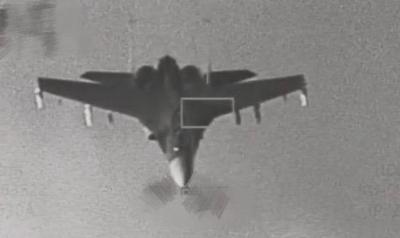A number of pro-localization groups yesterday rallied in front of the Ministry of Education in Taipei to protest against the government’s adoption of the Hanyu pinyin romanization system for translations of station names along the MRT line between Taiwan Taoyuan International Airport and Taipei Main Station, calling on the Democratic Progressive Party government to reinstitute its former policy of pushing for nationwide implementation of Tongyong pinyin.
The protesters called on the ministry, the governing body for the nation’s languages, to abandon the Hanyu system adopted by former president Ma Ying-jeou (馬英九) and reinstate the Tongyong system, which was promulgated in 2002 as the nation’s standard Mandarin romanization system.
Although the International Organization for Standardization (ISO) identifies Taiwan as a province of China, the organization uses the Tongyong system when referring to places in Taiwan, Taiwan Mandarin Romanization Alliance convener Yu Bor-chuan (余伯泉) said.

Photo: Sean Lin, Taipei Times
“For example, the ISO 3166 standard does not spell Kaohsiung as ‘Gaoxiong,’ just as it retained the spelling for Hong Kong, rather than ‘Xianggang,’ after the territory was handed over to China in 1997,” Yu said.
In addition, the ISO 7098 standard states that Hanyu pinyin is “the official language of the People’s Republic of China,” of which Taiwan is not a part, so the version of Mandarin used by Taiwanese does not fall within that scope, Yu said, adding that Ma led the nation down a path of “suicide” when he submitted to China and made Hanyu pinyin the national standard.
The administration of President Tsai Ing-wen (蔡英文) could have readopted Tongyong pinyin as the nation’s official romanization system after it took office, but it has instead treated the issue with indifference; essentially restricting itself to a framework set by Ma, he said.
As Taiwan’s culture and people have diverse origins, Taiwanese have formed a language that is uniquely Taiwanese, Taiwan Frontier convener Hong Hsien-cheng (洪顯政) said.
“The Mandarin used in Taiwan sounds different from that used in China and should have an independent system, just as British English is different from American English,” he said.
The nation’s use of Hanyu pinyin should not be made a political issue, ministry National Language Education Promotion Office head Wu Chung-yi (吳中益) said.
“The romanization used on road signs and at transportation stations is intended for foreigners... Every foreigner learning Mandarin learns Hanyu pinyin, because it is the international standard,” Wu said. “The decision has nothing to do with the nation’s self-determination or any ideologies, because the key point is to ensure that foreigners can read signs.”
“It is impossible to reason with the groups, as they are bent on politicizing the matter,” he added.

Trips for more than 100,000 international and domestic air travelers could be disrupted as China launches a military exercise around Taiwan today, Taiwan’s Civil Aviation Administration (CAA) said yesterday. The exercise could affect nearly 900 flights scheduled to enter the Taipei Flight Information Region (FIR) during the exercise window, it added. A notice issued by the Chinese Civil Aviation Administration showed there would be seven temporary zones around the Taiwan Strait which would be used for live-fire exercises, lasting from 8am to 6pm today. All aircraft are prohibited from entering during exercise, it says. Taipei FIR has 14 international air routes and

Taiwan lacks effective and cost-efficient armaments to intercept rockets, making the planned “T-Dome” interception system necessary, two experts said on Tuesday. The concerns were raised after China’s military fired two waves of rockets during live-fire drills around Taiwan on Tuesday, part of two-day exercises code-named “Justice Mission 2025.” The first wave involved 17 rockets launched at 9am from Pingtan in China’s Fujian Province, according to Lieutenant General Hsieh Jih-sheng (謝日升) of the Office of the Deputy Chief of the General Staff for Intelligence at the Ministry of National Defense. Those rockets landed 70 nautical miles (129.6km) northeast of Keelung without flying over Taiwan,

City buses in Taipei and New Taipei City, as well as the Taipei MRT, would on Saturday begin accepting QR code payments from five electronic payment providers, the Taipei Department of Transportation said yesterday. The new option would allow passengers to use the “transportation QR code” feature from EasyWallet, iPass Money, iCash Pay, Jkopay or PXPay Plus. Passengers should open their preferred electronic payment app, select the “transportation code” — not the regular payment code — unlock it, and scan the code at ticket readers or gates, General Planning Division Director-General Liu Kuo-chu (劉國著) said. People should move through the

The Ministry of National Defense (MND) today released images of the military tracking China’s People's Liberation Army (PLA) movements during the latest round of Chinese drills around Taiwan. The PLA began "Justice Mission 2025" drills today, carrying out live-fire drills, simulated strikes on land and maritime targets, and exercises to blockade the nation's main ports. The exercises are to continue tomorrow, with the PLA announcing sea and air space restrictions for five zones around Taiwan for 10 hours starting from 8:30am. The ministry today released images showing a Chinese J-16 fighter jet tracked by a F-16V Block 20 jet and the